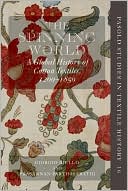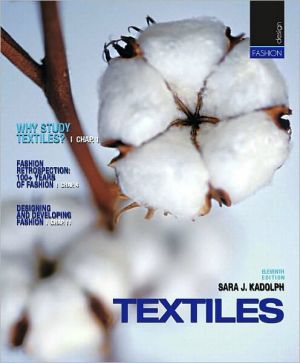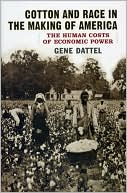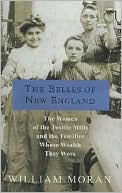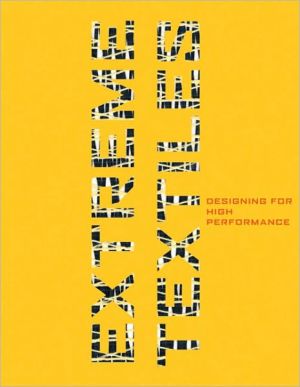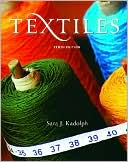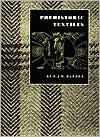Spinning World: A Global History of Cotton Textiles, 1200-1850
Search in google:
Cotton textiles were the first good to achieve a truly global reach. For many centuries muslins and calicoes from the Indian subcontinent were demanded in the trading worlds of the Indian Ocean and the eastern Mediterranean. After 1500, new circuits of exchange were developed. Of these, the early-modern European craze for Indian calicoes and the huge nineteenth-century export trade in Lancashire goods, and subsequent deindustrialization of the Indian subcontinent, are merely the best known. These episodes, although of great importance, far from exhaust the story of cotton. They are well known because of the enormous research energy that has been devoted to them, but other important elements of cotton's long history are deserving of similar attention. This collection of essays examines the history of cotton textiles at a global level over the period 1200-1850. This volume sheds light on new answers to two questions: what is it about cotton that made it the paradigmatic first global commodity? And second, why did cotton industries in different parts of the world follow different paths of development? Included in this second question is, of course, the problem of the so-called "great divergence" that suggests that Europe and Asia followed a common path of economic development until the end of the eighteenth century. Cotton textiles have been central in explaining the nature, timing and effects of a "divergence" in the nineteenth. A volume of this sort is timely for many reasons, not least of which is the growing interest in global history. Textiles remain one of the most important manufactured commodities in debates about economic, social and cultural change across the globe. By adopting a long historical view and a broad geographical viewpoint, this book wishes to avoid a Eurocentric perspective that has long dominated debates over the birth and rise of the cotton textiles industry in Europe. Empirically this book brings together, and adds to, the current state of knowledge on a number of questions related to the history of cotton textiles. The outlines of the cotton industry in medieval and early modern times, whether in southern Europe, central Africa, west Asia or the Indian subcontinent, are known only in the sketchiest of terms. The relationship between cotton textiles and those made from other fibers such as wool, linen, and silk is poorly understood. And there has been a woeful neglect of the cloth made from the great mixtures of cotton and linen, cotton and wool, and cotton and silk, which were mainstays of textile manufacturing from Europe to Bengal. And the long history of commerce and connections between the producers and consumers of cotton textiles in Asia, Africa, the Americas and Europe remains under-researched. As a consequence, even the Indian trade in cotton textiles and the rise of the Lancashire cotton industry are not fully understood within their larger temporal and regional and global contexts. This volume draws upon papers that were presented at a conference on "Cotton Textiles as a Global Industry" held in Padua, Italy, in November 2005 and a workshop on "Global Histories of Economic Development: Cotton Textiles and Other Global Industries in the Early Modern Period" held at the Fondation des Treilles, France, in March 2006. Both meetings were sponsored and organized by the Global Economic History Network of the London School of Economics and were held in preparation for Session 59 on "Cotton Textiles as a Global Industry" for the XIV International Economic History Association Congress held in Helsinki in late August 2006. Essays included in the volume are authored by 19 scholars from eight different nations, all of whom are specialists in the study of textiles. They are drawn from a range of sub-disciplines within history and bring together their areas and periods of specialization to provide a global history. Therefore, the volume covers a wide variety of approaches to the study of history, which is essential for constructing a global picture. Some of the contributors are internationally well known for their publications on the history of cotton, as well as other textiles in different world areas. The volume also draws upon the research of a number of younger scholars whose work will form the core of the future development of textile history as a global discipline.
Introduction: Cotton Textiles in Global History, Giorgio Riello (London School of Economics) and Prasannan Parthasarathi (Boston College)PART I. World Areas of Cotton Textile Manufacturing1. Cotton Textiles in the Indian Subcontinent, 1200-1800, Prasannan Parthasarathi (Boston College)2. The Resistant Fibre: Cotton Textiles in Imperial China, Harriet T. Zurndorfer (Leiden University)3. The First European Cotton Industry: Italy and Germany, 1100-1800, Maureen Fennell Mazzaoui (University of Wisconsin)4. Ottoman Cotton Textiles: The Story of a Success that did not Last, 1500-1800, Suraiya Faroqhi (Ludwig Maximilians University)5. 'Guinea Cloth': Cotton Textiles in West Africa before and during the Atlantic Slave Trade, Colleen E. Kriger (University of North Caronlina)6. The Production of Cotton Textiles in Early Modern Southeast Asia, William Gervase Clarence-Smith (School of Oriental and African Studies)PART II. Global Trade and Consumption of Cotton Textiles 7. Indian Textiles in the Indian Ocean in the Early Modern Period, Om Prakash (University of Delhi)8. Awash in a Sea of Cloth: South Asian Merchants, Cloth and Consumption in the Indian Ocean, 1300-1800, Pedro Machado (New York University)9. Japan Indianised: The Material Culture of Imported Textiles in Japan, 1550-1850, Kayoko Fujita (Osaka University)10. Revising the Historical Narrative: India, Europe and the Cotton Trade, Beverly Lemire (University of Alberta)11. Cottons Consumption in the Seventeenth- and Eighteenth-Century North Atlantic, Robert S. DuPlessis (Swathmore College)12. Fashion, Race and Cotton Textiles in Colonial Spanish America, Marta Valentin Vicente (University of Kansas)13. The Globalization of Cotton Textiles: Indian Cottons, Europe and the Atlantic World, 1600-1850, Giorgio Riello (London School of Economics)PART III. Cotton Revolutions and their Consequences in Europe and Asia 14. The Birth of a New European Industry: L'Indiennage in Seventeenth-Century Marseilles, Olivier Raveux (CNRS - UMR TELEMME)15. What were Cottons for in the Industrial Revolution? John Styles (University of Hertfordshire)16. The Limits of Wool and the Potential of Cotton in the Eighteenth and Early Nineteenth Centuries, Pat Hudson (University of Cardiff)17. The Geopolitics of a Global Industry: Eurasian Divergence and the Mechanisation of Cotton Textile Production in England, Patrick O'Brien (London School of Economics)18. Cotton and the Peasant Economy: A Foreign Fibre in Early Modern Japan, Masayuki Tanimoto (University of Osaka)19. Involution and Chinese Cotton Textile Production: Songjiang in the Late-Eighteenth and Early-Nineteenth Centuries, Bozhong Li20. Decline in Three Keys: Indian Cotton Manufacturing from the Late Eighteenth Century, Prasannan Parthasarathi (Boston College) and Ian Wendt (Washington State University)Introduction: Cotton Textiles in Global History, Giorgio Riello and Prasannan ParthasarathiPART I. World Areas of Cotton Textile Manufacturing 1. Cotton Textiles in the Indian Subcontinent, 1200-1800, Prasannan Parthasarathi2. The Resistant Fibre: Cotton Textiles in Imperial China, Harriet T. Zurndorfer3. The First European Cotton Industry: Italy and Germany, 1100-1800, Maureen Fennell Mazzaoui4. Ottoman Cotton Textiles: The Story of a Success that did not Last, 1500-1800, Suraiya Faroqhi5. 'Guinea Cloth': Cotton Textiles in West Africa before and during the Atlantic Slave Trade, Colleen E. Kriger6. The Production of Cotton Textiles in Early Modern Southeast Asia, William Gervase Clarence-SmithPART II. Global Trade and Consumption of Cotton Textiles 7. Indian Textiles in the Indian Ocean in the Early Modern Period, Om Prakash8. Awash in a Sea of Cloth: South Asian Merchants, Cloth and Consumption in the Indian Ocean, 1300-1800, Pedro Machado9. Japan Indianised: The Material Culture of Imported Textiles in Japan, 1550-1850, Kayoko Fujita10. Revising the Historical Narrative: India, Europe and the Cotton Trade, Beverly Lemire11. Cottons Consumption in the Seventeenth- and Eighteenth-Century North Atlantic, Robert S. DuPlessis12. Fashion, Race and Cotton Textiles in Colonial Spanish America, Marta Valentin Vicente13. The Globalization of Cotton Textiles: Indian Cottons, Europe and the Atlantic World, 1600-1850, Giorgio RielloPART III. Cotton Revolutions and their Consequences in Europe and Asia 14. The Birth of a New European Industry: L'Indiennage in Seventeenth-Century Marseilles, Olivier Raveux15. What were Cottons for in the Industrial Revolution?, John Styles16. The Limits of Wool and the Potential of Cotton in the Eighteenth and Early Nineteenth Centuries, Pat Hudson17. The Geopolitics of a Global Industry: Eurasian Divergence and the Mechanisation of Cotton Textile Production in England, Patrick O'Brien18. Cotton and the Peasant Economy: A Foreign Fibre in Early Modern Japan, Masayuki Tanimoto19. Involution and Chinese Cotton Textile Production: Songjiang in the Late-Eighteenth and Early-Nineteenth Centuries, Bozhong Li20. Decline in Three Keys: Indian Cotton Manufacturing from the Late Eighteenth Century, Prasannan Parthasarathi and Ian Wendt
